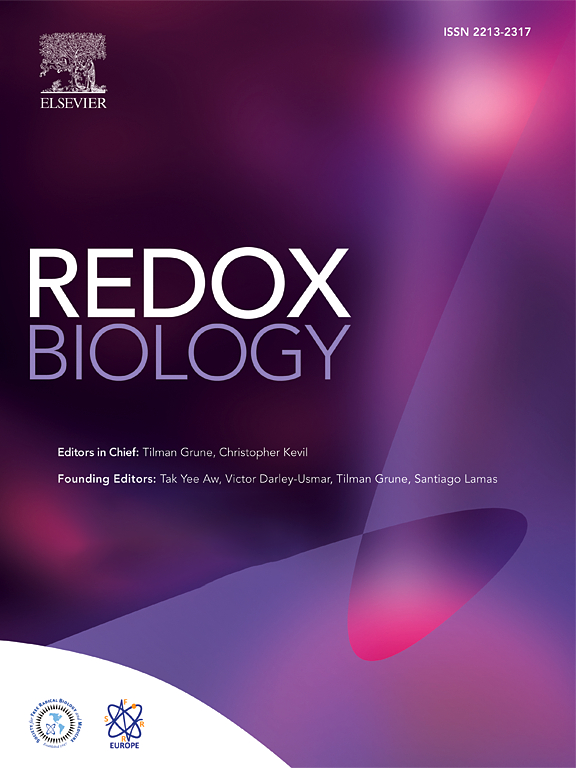Proximal tubular deletion of superoxide dismutase-2 reveals disparate effects on kidney function in diabetes
IF 10.7
1区 生物学
Q1 BIOCHEMISTRY & MOLECULAR BIOLOGY
引用次数: 0
Abstract
There is a large body of evidence implicating mitochondrial reactive oxygen species (ROS) overproduction and oxidative stress in the development of diabetic kidney disease and the deficiency of mitochondrial antioxidant systems in the kidney, such as manganese superoxide dismutase (MnSOD/SOD2) have been identified. The proximal tubules of the kidney are densely packed with mitochondria thereby providing energy via oxidative phosphorylation in order to drive active transport for proximal tubular reabsorption of solutes from the glomerular filtrate. We hypothesized that maintenance of MnSOD function in the proximal tubules would be critical to maintain kidney health in diabetes. Here, we induced targeted deletion of SOD2 in the proximal tubules of the kidney in Ins2Akita diabetic mice (SODptKO mice) and show that 20 weeks of SOD2 deletion leads to no major impairment of kidney function and structure, despite these mice displaying enhanced albuminuria and kidney lipid peroxidation (8-isoprostanes). Plasma cystatin C, which is a surrogate marker of glomerular filtration was not altered in SODptKO diabetic mice and histological assessment of the kidney cortex revealed no change in kidney fibrosis. Thus, our findings suggest that deletion of SOD2 in the proximal tubular compartment of the kidney induces a more subtle phenotype than expected, shedding light on the involvement of SOD2 and the proximal tubular compartment in the pathogenesis of diabetic kidney disease.

求助全文
约1分钟内获得全文
求助全文
来源期刊

Redox Biology
BIOCHEMISTRY & MOLECULAR BIOLOGY-
CiteScore
19.90
自引率
3.50%
发文量
318
审稿时长
25 days
期刊介绍:
Redox Biology is the official journal of the Society for Redox Biology and Medicine and the Society for Free Radical Research-Europe. It is also affiliated with the International Society for Free Radical Research (SFRRI). This journal serves as a platform for publishing pioneering research, innovative methods, and comprehensive review articles in the field of redox biology, encompassing both health and disease.
Redox Biology welcomes various forms of contributions, including research articles (short or full communications), methods, mini-reviews, and commentaries. Through its diverse range of published content, Redox Biology aims to foster advancements and insights in the understanding of redox biology and its implications.
 求助内容:
求助内容: 应助结果提醒方式:
应助结果提醒方式:


